Saving Money on Groceries: 17 Tips in 2025
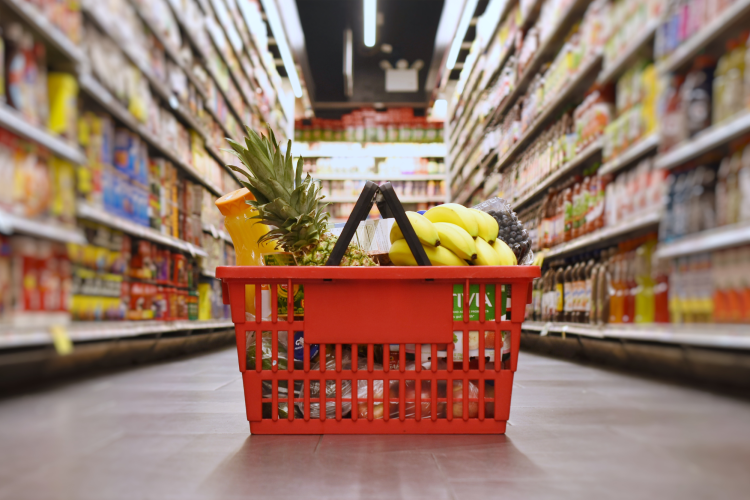
Those of us who adore all things food might not think about saving money on groceries when we make our weekly trip to the supermarket. Shopping for food is a highlight of our week. We look forward to the chance to slowly wander each aisle, surveying all the options and getting inspired for our upcoming meals. When food is your joy, your hobby and your passion, saving money on groceries may not be your top priority.
But how much do you spend on groceries each week? Have you ever sat down to add up your total food cost each month (including drive-thru and eating out)? The cost of everything from milk to bread to eggs has skyrocketed in recent years. Grocery shopping on a budget is more challenging than ever. Even if you’re buying the same things week to week, your expenses have likely gone up. Every household needs to find ways to cut monthly spending, and saving money on groceries should be on that list.
Don’t despair! If you follow this guide for ways to save money on groceries, you won’t have to sacrifice or survive on ramen noodles and cereal. Paying closer attention to prices and knowing a few simple tips might even turn your weekly shopping trip into more of a treasure hunt than it was before. We’ve put together 17 tips for saving money on groceries that are easy for anyone to embrace.
Jump to Section
- Cook It Yourself
- Chop It Yourself
- Look at Prices
- To Buy or Not to Buy Organic
- Shop at Farmers Markets
- Make a List
- Have Your Groceries Delivered
- Don’t Buy in Bulk
- Buy the Whole Chicken, Raw
- Get Loyal, Stay Loyal
- Use Your Freezer
- Don’t Shop When You’re Hungry
- Buy Generic Brands
- Consider a Meal Delivery Plan
- Shop Local
- Go Shopping in Your Own Pantry
- Grow Your Own
1. Cook It Yourself
One of the easiest ways to start saving money on groceries is to learn to cook more meals yourself. Grocery stores are smart and have responded to our “time is money” culture with a selection of pre-prepared foods staged front and center. But those time savers are costing you precious pennies.
A single serving of heat-and-eat food can be more than $10, which means dinner for two is $20 or more. Did you know that for $20 you can buy an entire chicken, more vegetables than you need for one dinner plus salad ingredients?
If the idea of making your own meals is a struggle, try using some of the money you save in our tip guide to take cooking classes near you (such as cooking classes in Toronto or cooking classes in Boston) or even an online cooking class. It’s a smart investment!

2. Chop It Yourself
It’s very tempting to grab that container of pre-chopped onion or the package of garlic that is already peeled. Those were easy time saver foods to buy before inflation. But have you ever looked at the cost?
A container of pre-chopped yellow onion is around $3.00 in most stores and is usually equivalent to roughly one whole onion. Compare that to the cost of just buying a single yellow onion, which is about $0.60. Even organic is under $1. If you don’t have knife skills, use the money you’re saving on groceries to invest in an onion chopper.
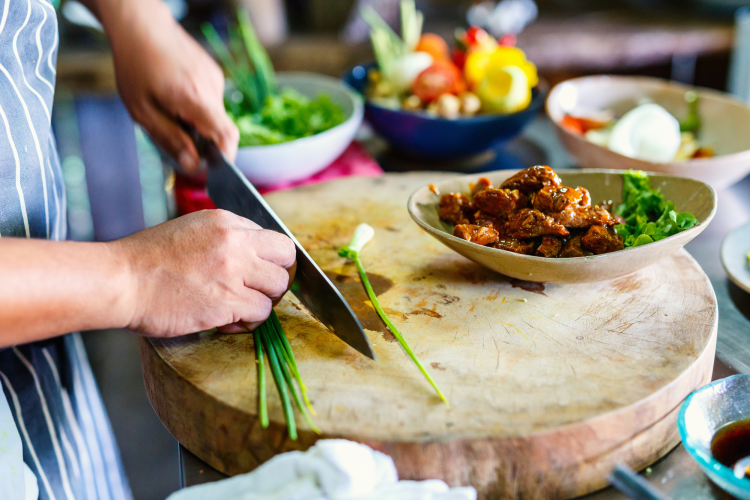
3. Look at Prices
The simplest way to start saving money on groceries is to pay attention to prices and to shop at the cheapest grocery stores. We are creatures of habit, so we tend to shop at the same place and reach for the same brands each week. Or the ones with the prettiest packaging. But a quick pause to review the prices of comparable options may surprise you and help you save on groceries without leaving anything on the shelf.
Saving money on groceries is easy if you pay attention to the weekly sales as well. Don’t glaze over BOGO deals or ignore a price break just because it isn’t your normal brand. Sales are opportunities to discover new treasures.
And don’t miss out on the last chance shelf. You might just find your dog’s favorite canned food is about to disappear and you’ll get the last batch for a bargain.

4. To Buy or Not to Buy Organic
If you are wondering how to save on groceries during inflation while not letting your family starve, start by taking stock of the highest-priced items on your list. You may find that a good chunk of your money is going to all the organic meat and produce you’ve become accustomed to buying.
The most obvious way to start saving money on groceries for those who buy everything organic is to stop. There are some cases where it is worth the price, especially on produce items like lettuce where there is a higher potential for absorption/retention of fertilizers and chemicals. But there are plenty of items shown to have very low residues — including avocados, eggplant, broccoli and asparagus — and these are some of the items where the organic premium is the highest. Check out this article from GoodRx Health for more information on how to choose your organic products wisely.
And if you are absolutely set on having organic, then saving money on groceries is best done by considering where you shop for those organic products. A local farmers' market is cheaper than that big box grocery brand any day of the week.

5. Shop at Farmers' Markets
Expanding on the last point, a fun and sustainable way to start saving money on groceries is to shop at farmers' markets in general. The majority of the U.S. has access to at least a seasonal local market where you can not only save money on groceries but support local farmers in your community at the same time.
Saving money on groceries is easy when you shop at a farmers’ market because you’re cutting out the middleman. Every item you buy at a grocery store has packaging, transportation and storage costs associated with it, and this adds up. If you don’t have a market, check for farm box delivery services or co-ops that you can subscribe to for delivery either to home or to office.
Shopping at local farmers’ markets will also help your effort to start saving money on groceries by forcing you to buy what is in season. Items that are not in season get shipped into the U.S. from other countries which contributes to their overall cost.

6. Make a List
It seems obvious in theory, but it doesn’t always happen in practice. Saving money on groceries could be as easy as being more disciplined about writing a grocery list so that you don’t wander the aisles grabbing items haphazardly.
Have you ever gone to the store, reached for a package of pasta and had that moment when you wondered if you might already have some at home? Of course you have. But you grab that spaghetti anyway, and when you get it home it will join the other three packages that were already in your pantry.
Next time, make a list. And cross-check your pantry. Saving money on groceries might just be that easy.

7. Have Your Groceries Delivered
This tip for saving money on groceries requires a little restraint. But truth be told, most people end up spending more than they expected when they shop in the store because there are always impulse buys. Or you buy things that look good, then get home and realize you have nothing to make with it. Sound familiar?
Plan your menus in advance and then order what you need and only what you need online. Have it delivered. If you know that you are weak in the knees for every endcap display, this is how you will succeed at saving money on groceries. Don’t put yourself in temptations way.

8. Don’t Buy in Bulk
Wait, what? Isn’t buying in bulk supposed to be cheaper? Having a food club membership for the purpose of saving money on groceries can be a blessing or a curse. Food clubs can be cheaper on certain items because they package in bulk, but how often does that actually translate to real savings of money on groceries? As it turns out, very rarely.
For perishable items like bread or produce, you may think you’re saving money on groceries only to realize you threw half of it away because it went bad before you could finish it. It would have been cheaper to pay slightly more in a regular grocery store but only buy what you can use.

9. Buy the Whole Chicken, Raw
We know this strategy for saving money on groceries is hard because passing up the rotisserie chicken in the grocery store is next to impossible. But consider this — rotisserie chickens are around two pounds on average and cost anywhere from $5 to $12. When you buy frozen uncooked whole chickens, they usually weigh five to six pounds and cost around $7-$9, as of this writing. In other words, you're getting a lot more for your money.
Roasting a chicken at home is easy and a good way to start saving money on groceries if your family eats a lot of poultry (this spatchcock chicken recipe is a great way to start). Invest in a meat thermometer so you don’t overcook it and you might even find that your homemade is better than those dried-out rotisseries.

10. Get Loyal, Stay Loyal
Every local grocer has a loyalty card and you’ll start saving money on groceries as soon as you sign up. Make sure you have a loyalty card for every store where you shop and remember to use it. We promise this will be another super simple step toward saving money on groceries that doesn’t require any sacrifice.
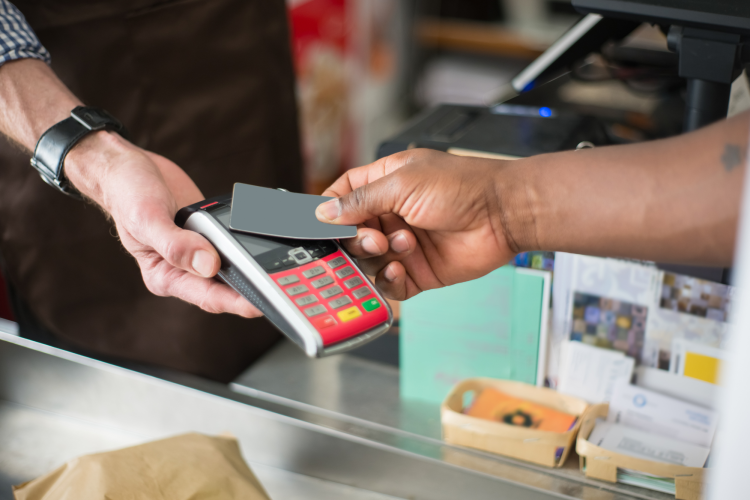
11. Use Your Freezer
When you see a great deal on frozen salmon or your favorite bean burger, buy one for now and one for the freezer. Making good use of your freezer is a classic tool for saving money on groceries. Do you tend to waste half a loaf of bread most weeks? Freeze it. Only ate half of that banana this morning? Freeze it.
With proper preparation, here are some of the foods you can freeze if you buy or make too much:
- some types of cheese e.g. mozzarella. And can you freeze feta cheese? Yes!
- coconut milk
- spaghetti and other pastas
- baked beans
- cilantro
- cottage cheese
And can we talk about not wasting leftovers? Buy some sturdy meal prep containers and never face the guilt of tossing last week’s moldy casserole in the trash again.
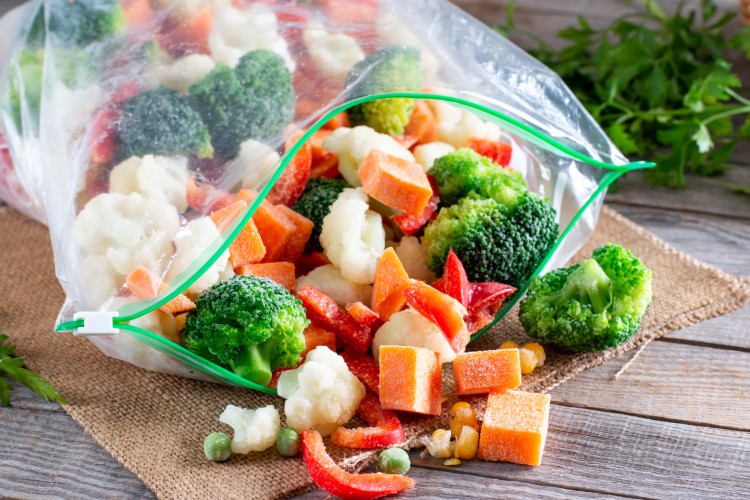
12. Don’t Shop When You’re Hungry
No explanation is required here.

13. Buy Generic Brands
This goes back to an earlier tip on our list of ways to start saving money on groceries. It’s all about paying attention to prices. Are you convinced that generic brands are somehow inferior foods? Did you know that most generic brands are the exact same foods that are in fancy brand-labeled packages? It’s 100% true. The cost difference is completely related to cheaper packaging.

14. Consider a Meal Delivery Plan
For most of us, signing up for a meal plan is not going to result in saving money on groceries. Most meal plans are either kits or prepared heat-and-eat meals, neither of which are cheap. That said, if you are a terrible menu planner and a chronic impulse grocery shopper, then one of the options on our list of best meal delivery services may actually help you with saving money on groceries. It’s also great for those who are sticking to a diet like keto or paleo. Meal delivery services cater to these diets so you can get what you need without being subject to other temptations at the store.
Avoiding temptation is also a good reason to use curbside pickup instead of going into the store and a way to increase your success at saving money on groceries.
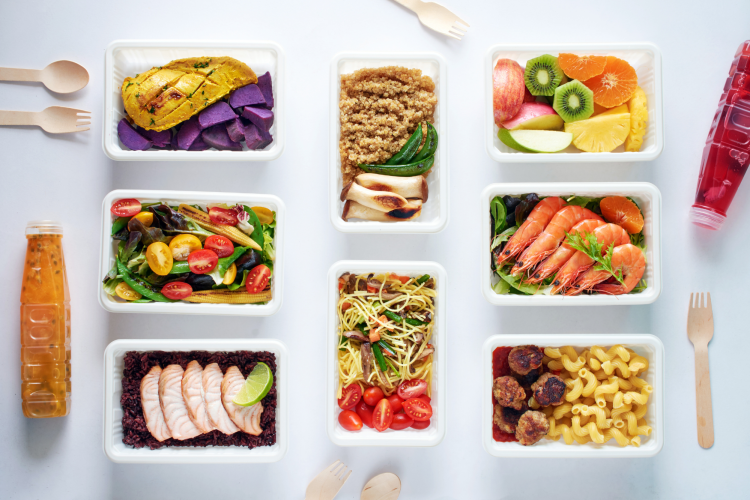
15. Shop Local
We’re not talking about picking a grocery that is closer to home here. A better plan for saving money on groceries is to buy local products. The cost of bringing apples from the state of Washington is significant, so if you live in New England, buy apples from Massachusetts. Don’t buy Atlantic salmon if you live on the Pacific coast. And don’t buy anything not produced in the U.S. if there is a homeland option.
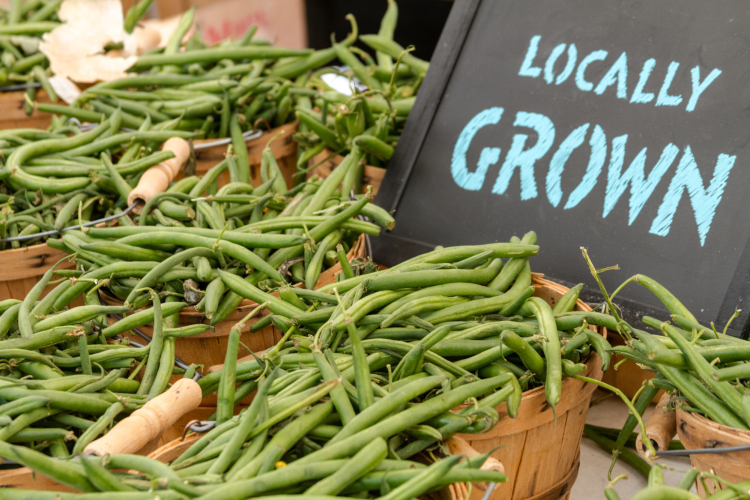
16. Go Shopping in Your Own Pantry
Sometimes the best strategy for saving money on groceries is to not spend money at all. We are blessed with abundance in the U.S. and most of us have a pantry that is overflowing with shelf-stable foods we just forgot about. And then there’s the freezer…
Challenge yourself to see how long you can live off what you already have.
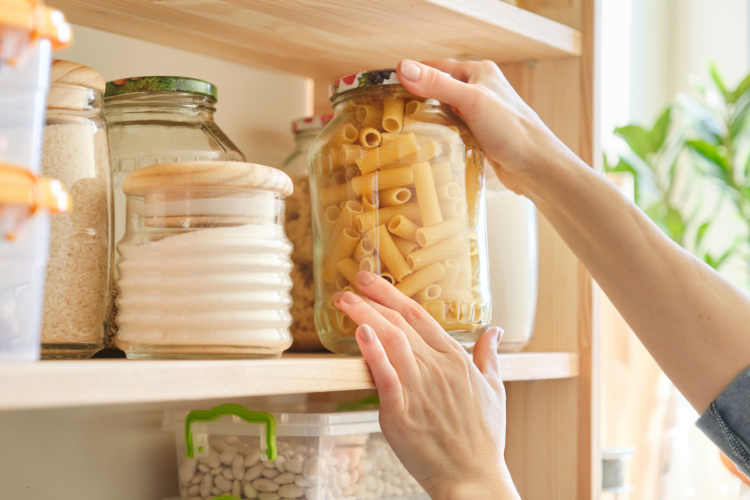
17. Grow Your Own
While this isn’t a quick fix, one of the best ways to start saving money on groceries is to grow your own. There are tons of DIY garden boxes available so you don’t even have to till up your yard. And there really is nothing like the taste of homegrown.
Check out the Department of Agriculture website in your area for tips on which foods are easiest to grow and when to start planting.

It’s a rare day when we leave the grocery store spending less than we planned. More often than not, we get a bit of sticker shock when we see the final tally. Saving money on groceries doesn’t mean you have to sacrifice. It just means you have to be a little smarter about your sport.
For even more smart ways to explore food, check out other experiences happening on Cozymeal.



FOOD FOR THOUGHT?
Join the conversation.